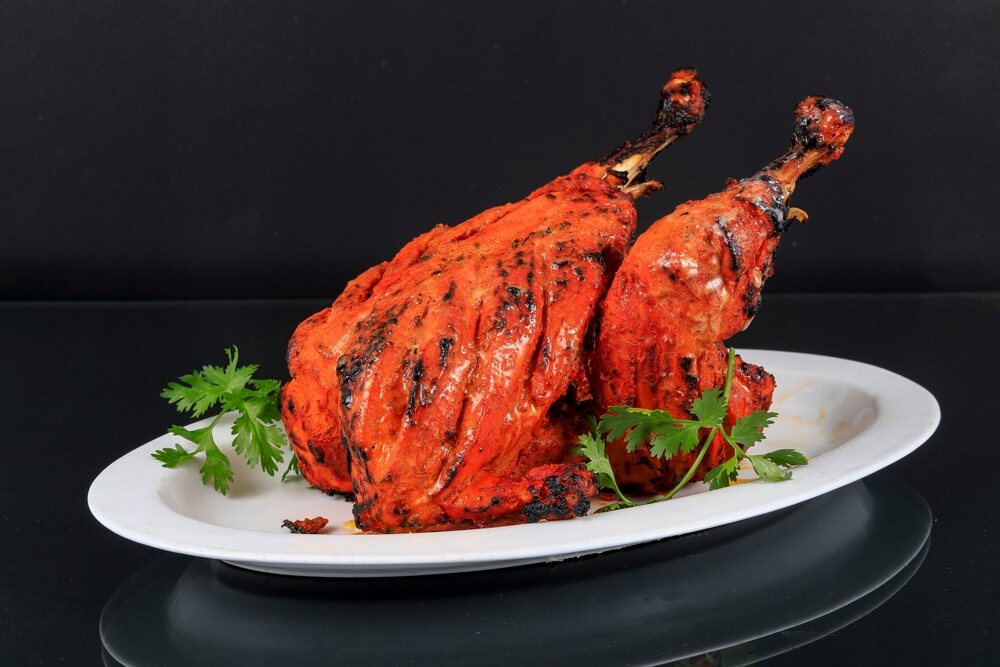Tandoori chicken is one of the most famous dishes in Indian cuisine. It is famous for its vibrant red color, smoky flavor, and tender, juicy meat. It’s a dish that’s everyone loves. Moreover, it has found its way onto the menus of restaurants all around the world. But tandoori chicken has a rich history. Moreover, it has evolved in many exciting ways across different cultures? Let’s explore the journey of tandori chicken and how it has transformed into the global sensation we know today.
The Origins of Tandoori Chicken
Tandoori chicken is from the Indian subcontinent, specifically in the Punjab region. It is now between India and Pakistan. The dish gets its name from the tandoor, a traditional clay oven to cook food at very high temperatures. The tandoor is an ancient cooking method. It is dating back thousands of years. Moreover, they would traditionally use it for baking bread, roasting meats, and even cooking vegetables.
The story of tandoori chicken as we know it today began in the 1940s. A man named Kundan Lal Gujral, who owned a small restaurant in Peshawar (now in Pakistan). He was experimenting with different ways to cook chicken. Moreover, he marinated the chicken in a mixture of yogurt and spices and then cooked it in a tandoor. The result was a dish that was tender on the inside, crispy on the outside, and bursting with flavor. Tandoori chicken quickly became popular. Moreover, when Gujral moved to Delhi after the partition of India in 1947 he opened a restaurant called Moti Mahal. This was where the dish gained even more fame.
The Traditional Recipe
The traditional recipe for tandoori chicken involves marinating the chicken in a mixture of yogurt, lemon juice, and a blend of spices. This typically includes cumin, coriander, turmeric, chili powder, and garam masala. The yogurt helps to tenderize the meat, while the spices add depth of flavor. After marinating, they skewer the chicken and cook in a tandoor. Moreover, it gives it its signature smoky flavor and charred appearance.
One of the key characteristics of halal food menu mississauga tandoori chicken is its vibrant red color. This color originally came from the spices used in the marinade. But in modern times, some restaurants use food coloring to achieve a more intense red hue. However, traditionalists prefer to keep the dish natural, relying on the spices alone for color and flavor.
Tandoori Chicken Goes Global
As people from the Indian subcontinent migrated to different parts of the world, they brought their culinary traditions with them. Tandoori chicken was one of the dishes that quickly gained popularity outside of India. Moreover, it began to evolve as it was able to suit different tastes and ingredients available in other countries.
Tandoori Chicken in the United Kingdom
One of the first places where tandori chicken gained widespread popularity was in the United Kingdom. Indian cuisine became very popular in Britain, especially after World War II. It was when many people from India and Pakistan came to the UK. Tandoori chicken became a favorite dish in Indian restaurants. Moreover, it was often a starter or main course.
In the UK, the dish evolved in several ways. Some restaurants began to use boneless chicken pieces instead of whole chicken, making it easier to eat. Additionally, the dish was often a part of the side of salad, naan bread, and mint chutney. Another significant evolution of tandoori chicken in the UK was the creation of chicken tikka masala, a dish that combined tandoori chicken with a creamy tomato-based sauce. This dish became so popular that it is now a part of one of the UK’s national dishes, even though it has its roots in Indian cuisine.
Tandoori Chicken in the United States
Karachi kitchen menu Tandoori chicken also made its way to the United States, where it became a popular dish in Indian restaurants. In the US, the dish was often with a side of rice or naan. Moreover, it became a favorite among those who enjoyed spicy, flavorful food.
One of the most notable ways that tandoori chicken evolved in the US was through fusion cuisine. Chefs began to experiment with combining tandoori chicken with other culinary traditions. Therefore, leading to the creation of dishes like tandoori chicken pizza, tandoori chicken tacos, and tandoori chicken sandwiches. These fusion dishes became popular in their own right. Furthemore, offering a new and exciting way to enjoy the flavors of tandoori chicken.
Tandoori Chicken in Southeast Asia
In Southeast Asia, tandoori chicken was embraced with enthusiasm. Moreover, it quickly became a popular dish in countries like Malaysia, Singapore, and Thailand. In these regions, the dish evolved to incorporate local flavors and ingredients.
For example, in Malaysia, tandori chicken is often with nasi lemak, a fragrant rice dish. They cook it in coconut milk, along with spicy sambal, boiled eggs, and peanuts. This combination creates a unique and delicious meal that blends the flavors of Indian and Malay cuisine.
In Thailand, tandoori chicken might be with a side of sticky rice and a spicy dipping sauce, reflecting the Thai preference for bold, spicy flavors. You can also garnish the dish might also be garnished with fresh herbs like cilantro and mint, adding a burst of freshness to the smoky, spicy chicken.
Conclusion: The Global Journey of Tandoori Chicken
Tandoori chicken’s karachi food court mississauga menu journey from the tandoors of Punjab to the plates of people around the world is a testament to the power of food to bring people together. This dish has not only remained a beloved classic in Indian cuisine but has also evolved and adapted to become a global favorite.
So next time you take a bite of tandoori chicken, think about its rich history and the many ways it has evolved across cultures. Who knows? Maybe you’ll be inspired to add your own twist to this delicious dish and contribute to its ever-evolving legacy!



